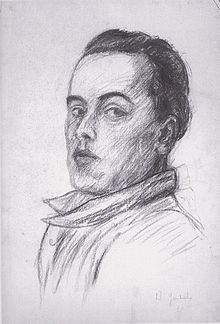 | ||
Died 12 May 2014, Massagno, Switzerland | ||
Aurelio Gonzato (Chiasso, December 30, 1914 – Massagno, May 12, 2014) was a Swiss mosaicist and painter.
Contents
Biography
Aurelio Gonzato, son of Carlo Gonzato and Maria Gonzato, was the eldest among ten brothers and sisters. One of his brothers was the painter Guido Gonzato. Aurelio collaborated many times with his brother, who was a fundamental figure in his artistic development. Aurelio was very young when he started to focus on graphical and craft works in a self-taught way. When he was 18-years-old he founded the artistic movement Arte decorativa razionale (Rational decorative art). This movement was the first among many other movements and associations he would later found. At that time, he added a research on form and space to his figurative pictorial practice. This research made him closer to the researches of the abstractionists from Como. In fact, the dialogue between figuration and abstraction characterized Aurelio Gonzato's entire artistic production, and, most of all, his approach to religious figuration. In 1936 he created and patented Futuristmetal, a system composed of metallic plane forms. Combined between them, this metallic plane forms permitted to build several figures. The aim of the Futuristmetal system was this: to be a source material to develop renewable and modifiable billboards. In 1940, Aurelio Gonzato moved to Rome and he inscribed himself in the art academy Accademia di San Luca. In 1942, Aurelio returned to Switzerland and he followed his pictorial work. Later, in the beginning of the 1950s, he moved between Venice, Ravenna and Aquileia in order to study the techniques of Byzantine mosaic. These studies helped him develop a personal understanding about mosaic: according to this understanding, the classical themes of religious figuration combined with an experimentation on form. This experimentation was already present in the Futuristmetal system. Aurelio Gonzato's mosaics can be found in many churches of the Ticino canton and Switzerland.
